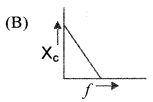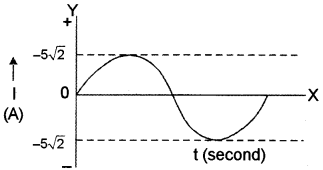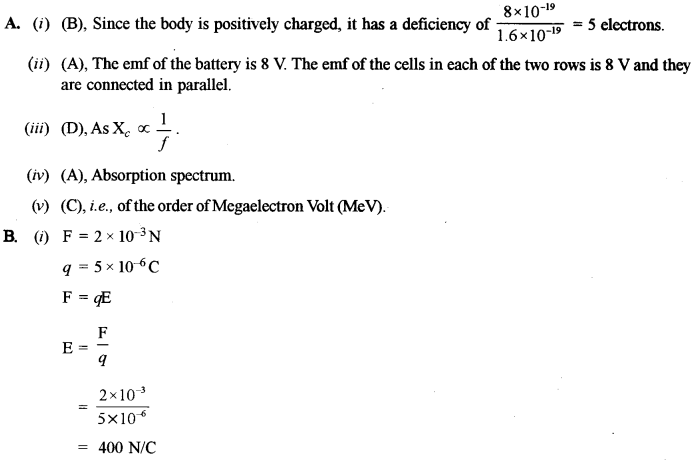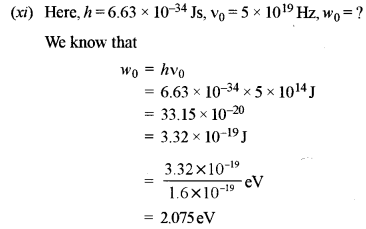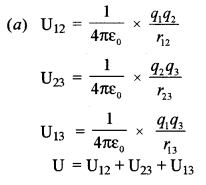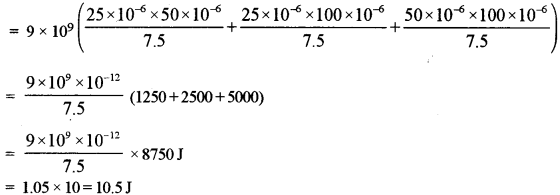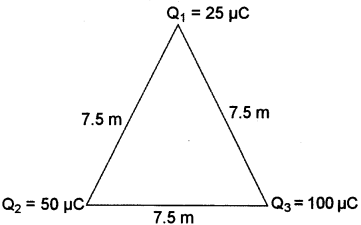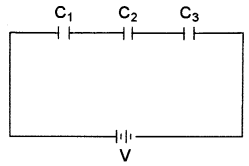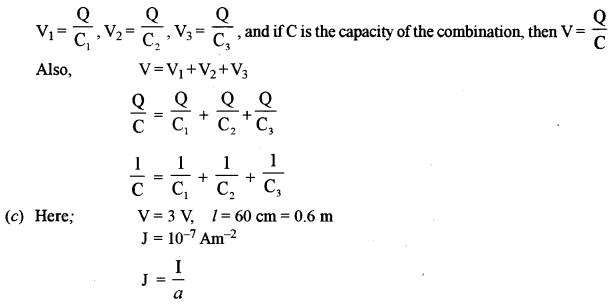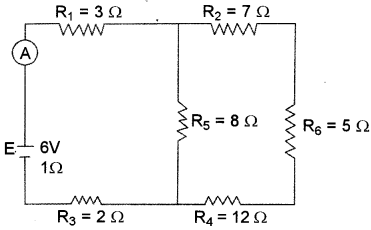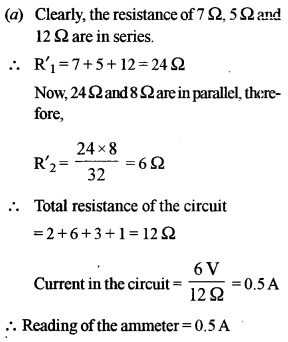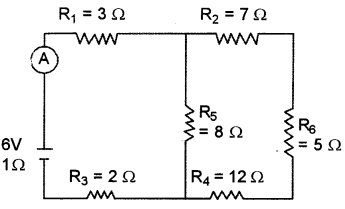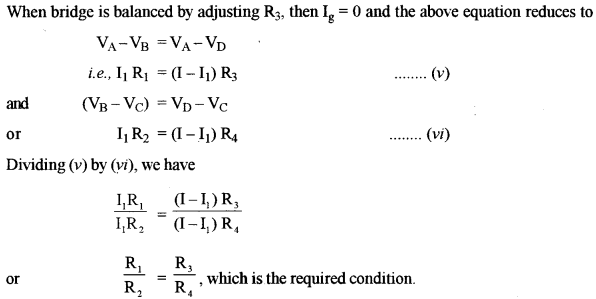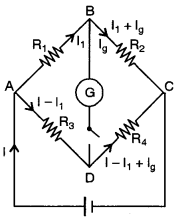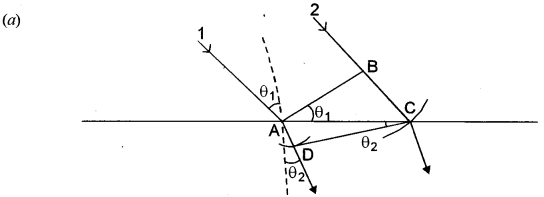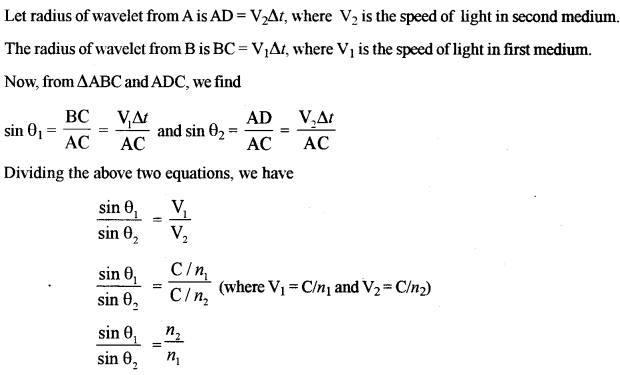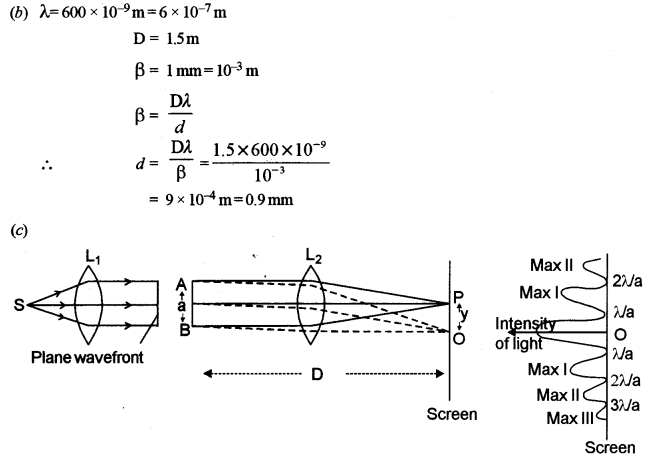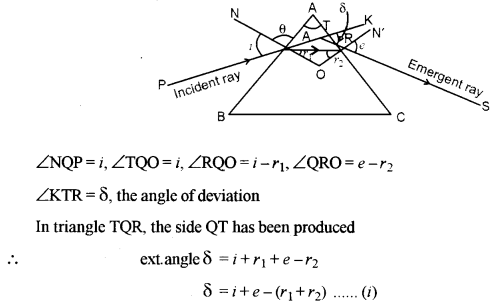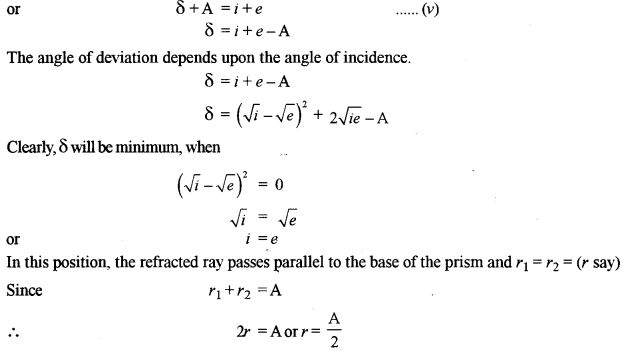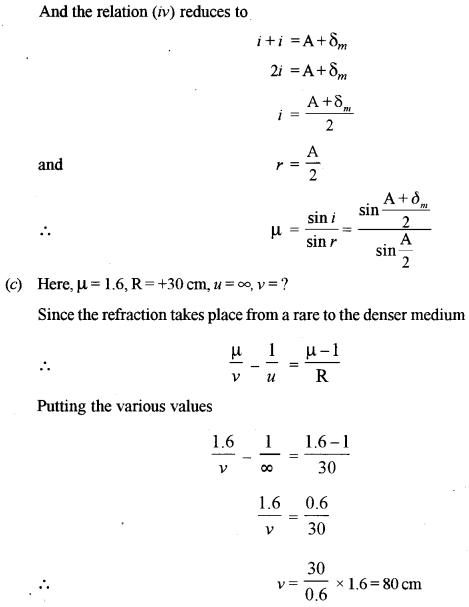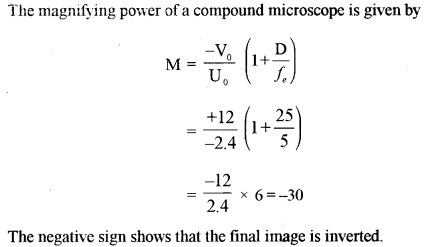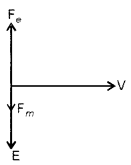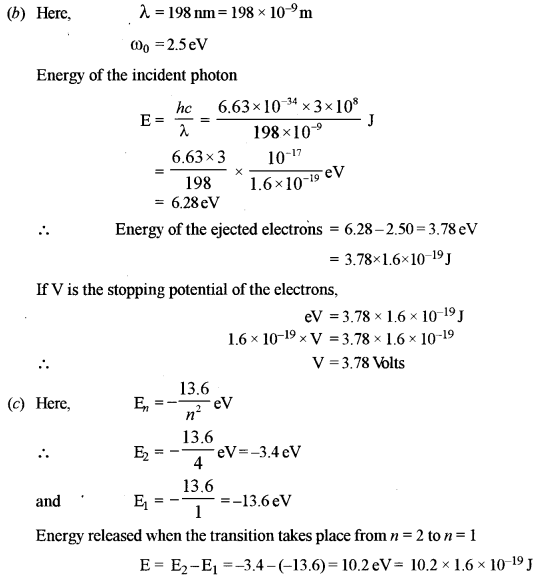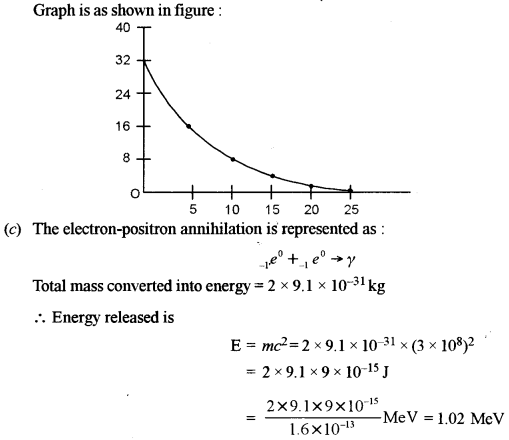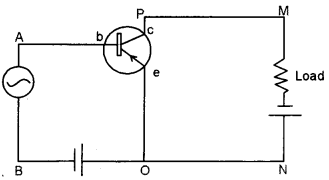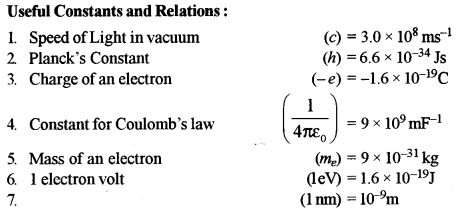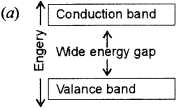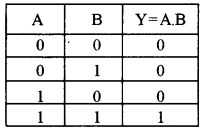ISC History Previous Year Question Paper 2015 Solved for Class 12
Maximum Marks: 80
Time allowed: Three hours
- Candidates are allowed additional 15 minutes for only reading the paper. They must NOT start writing during this time.
- Answer Question 1 (Compulsory) from Part I and five questions from Part II, choosing two questions from Section A, two
- questions from Section B and one question from either Section A or Section B.
- The intended marks for questions or parts of questions are given in brackets [ ].
Part—I
Answer all questions
Question 1. [20]
(i) Name one well-known revolutionary organization established in Bengal, in the early years of the twentieth century.
(ii) How did the British Government implement the policy of Divide and Rule in the Morley- Minto Reforms of 1909 ?
(iii) What was Sir Sayyid Ahmad Khan’s main objective in establishing the Mohammedan Anglo-Oriental College ?
(iv) Why did Gandhiji form the Satyagraha Sabha in February, 1919 ?
(v) What was the main objective of the Nehru Report ?
(vi) Why was the All India States People’s Conference formed ?
(vii) What was the most important feature of the Government of India Act of 1935 ?
(viii) Why did the Congress Ministries resign in 1939 ?
(ix) What was the primary objective of Direct Action Day launched by the Muslim League ?
(x) Which international movement was based on the principles of Panchsheel ?
(xi) Why did Mussolini introduce the ‘Battle of Wheat’ programme ?
(vi) Backlash : Politically, the intervention in Suez was a disaster. US President Dwight Eisenhower was incensed. World opinion, especially that of the United States, together with the threat of Soviet intervention, forced
(xii) Mention the significance of the Enabling Law (March 1933).
(xiii) Mention any one adverse effect of the Great Depression (1929) on the Japanese economy.
(xiv) Name the original signatories of the Anti- Comintern Pact (1936).
(xv) Give any one reason for the launch of ‘Operation Overlord’ 1944, by the Allied Powers ?
(xvi) What is the economic extension of the Truman Doctrine known as ?
(xvii) What was the objective of the Berlin Blockade (1948-49) ?
(xviii) Name any two founder members of ASEAN.
(xix) What important result did the Korean War have on the future powers of the UN General Assembly ?
(xx) Why did Nasser nationalize the Suez Canal ?
Answer 1.
(i) The most important feature of the Government of India Act of 1935 was that it provided for provincial autonomy of British India with some restrictions.
(ii) The Congress Ministries resigned in 1939 because at the outbreak of the World War II, the Viceroy proclaimed India’s involvement in the war without prior consultations with the main political parties. When Congress demanded an immediate transfer of power in return for cooperation of the war efforts, the British Government refused. As a result, Congress resigned from power.
(iii) The primary objective of the Direct Action Day was to protest the rejection of the proposed Muslim-majority Pakistan and assert its demand for a separate Muslim homeland.
(iv) The ‘Non-Alignment movement’ was based on the principles of Panchsheel.
(v) On March 23, 1933, the newly elected members of the German Parliament (the Reichstag) met in the Kroll Opera House in Berlin to consider passing Hitler’s Enabling Act. It was officially called the ‘Law for Removing the Distress of the People and the Reich.’ If passed, it would effectively mean the end of democracy in Germany and establish the legal dictatorship of Adolf Hitler.
(vi) The Great Depression affected Japan in many ways. One adverse effect of it on the Japanese economy was that it shrank by 8% during 1929-1931. In both, the cities and the countryside, everyone faced hard times, producing notable increases in strikes and rent disputes. 35,000 employees of a cotton-spinning company went on strike.
(vii) Germany, Italy and Japan were the three power signatories of the ‘Anti-Comintern Pact.
(viii) ‘Operation Overlord’ which was launched by the Allied invasion of North-West Europe in June 1944, was a remarkable achievement. It provided the springboard from which forces from Britain, the United States, Canada, Poland and France could liberate western Europe from German occupation-before advancing on Berlin to defeat Hitler.
(ix) The economic extension of the Truman Doctrine came to be known as the Marshall Aid Plan.
(x) The Berlin Blockade had two objectives :
- To prevent the creation of a West German state.
- Western powers to be forced to withdraw from Berlin.
(xi) The Korean War, from 1950 to 1953, was the most severe test the United Nations had to face since its inception in 1945. As a part of the whole Cold War scenario, the Korean war was a complicated issue with which the United Nations had to successfully deal with or lose credibility just five years after it had come into being. United Nations Security Council Resolution 82, was a measure adopted by the United Nations Security Council (UNSC) on June 25,1950. The resolution demanded that North Korea should immediately end its invasion of South Korea, the catalyst for the beginning of the Korean War. The measure was adopted by a vote of nine supports, none opposed, and one abstention.
(xii) The Suez Canal, which connects the Mediterranean and Red Seas across Egypt, was completed by French engineers in 1869. For the next 87 years, it remained largely under British and French control, and Europe depended on it, as an inexpensive shipping route for oil from the Middle-east. After World War II, Egypt pressed for evacuation of British troops from the Suez Canal Zone, and in July 1956 President Nasser nationalized the canal, hoping to charge tolls that would pay for construction of a massive dam on the Nile River.
Part-II
Section—A
Question 2.
Radical nationalism took place in the closing years of the 19th century and in the early years of the 20th century. In this context discuss :
(a) The economic and political causes that led to the growth of this phase of the National Movement. [8]
(b) The impact of international events. [4]
(c) The methods adopted by the radical nationalists to achieve their objectives. [4]
Question 3.
(a) Discuss the following factors and events that led to the establishment of the Muslim League (1906): [6]
(i) Economic backwardness of the country.
(ii) The Hindi-Urdu controversy.
(b) What were the principal demands of the Shimla Deputation ? [4]
(c) State any two objectives of the Muslim League. How did the British Government respond to its formation ? [6]
Question 4.
(a) Why was the Simon Commission sent to India in 1927 ? How did the Indians react to it ? [6]
(b) Give an account of the significant development in the National Movement from the Lahore Session of the Congress in 1929 to the suspension of the Civil Disobedience Movement in 1931. [10]
Question 5.
(a) What historic announcement did the British Prime Minister Clement Atlee make on 20th February, 1947 ? [2]
(b) Enumerate the main provisions of the Indian Independence Act. [8]
(c) Why did the Congress accept partition ? [6]
Answer:
(a) The Prime Minister of Britain Clement Atlee, declared on February 20,1947, in the House of Commons that the British would quit India after transferring power to the responsible hands, not later than June, 1948. The idea was that the Indians should settle their issues before that. He also announced the appointment of Lord Mountbatten as Viceroy in place of Lord Wavell.
(b) The main provisions of the Indian Independence Act of 1947, were as follows :
- On 15th August 1947, after the partition of India, two independent kingdoms, India and Pakistan would be established.
- Eastern Bengal, Western Punjab, Sindh and North-West Frontier Province would be included in Pakistan.
- It was not obligatory on the part of both the nations to accept the membership of the British Commonwealth of Nations. The choice was left to India and Pakistan.
- The title Kaiser-i-Hind, awarded to the British Crown would be abolished and the post of the Secretary of States for India would come to an end.
- Before the framing of the new Constitutions in India and Pakistan, both the countries would be governed under the Government of India Act, 1953.
- The native rulers were given the choice to join any State they liked.
- Those who had joined the civil service before 15th August, 1947 would continue in that service after independence.
They would enjoy the same privileges and rights relating to the remuneration, leave, pension, etc.
Accordingly, Mohammed Ali Jinnah became the Governor General of Pakistan on 15th August, 1947. From the Red Fort in Delhi, Pandit Jawaharlal Nehru delivered his ‘Tryst with Destiny’ speech on 15th August, 1947 as the clock struck 12 and India became independent of the British rule.
(c) The Congress accepted partition under the Mountbatten plan for several reasons :
- They felt that by accepting the Plan they would get the time to settle in and ensure peaceful and immediate transfer of power.
- The communal situation of the country was very precarious and accepting the partition was the only way to come out of the situation.
- The Congress was convinced that if the partition was rejected, the League’s continuous agitation would disrupt the working of the Constituent Assembly.
- The Congress believed that non-acceptance of the Plan would lead to delay of the transfer of power.
Question 6.
(a) With reference to the conflict between India and Pakistan after the partition, explain the following: [8]
- The refugee problem.
- Problems arising from transfer of assets.
- The causes of the Indus River Waters dispute.
- The resolution of the Indus River waters dispute.
(b) Why did India follow a policy of Non-alignment under Nehru ? [4]
(c) State the aims of NAM. [4]
Answer:
(a) (i) The Partition of India was the partition of the British Indian Empire which led to the creation, on August 14, 1947 and August 15, 1947, respectively, of the sovereign states of the Dominion of Pakistan and the Union of India . Massive population exchanges occurred between the two newly formed nations in the months immediately following Partition.
This is known as the refugee problem. The division of Punjab and Bengal witnessed the biggest migration ever known in world history. This problem may be divided into three heads:
- The incoming refugees from West Punjab (New in Pakistan) to East Punjab.
- The refugees from North-West Frontier Province.
- The refugees from the Province of Sind and,
- The refugees from East Bengal to West Bengal.
According to the report of the Government of India, between September 1947 and March 1948, a little more than one million people crossed once from the new state of Pakistan to East Punjab on foot, over one and a half million by rail, 364 thousand by motor transport and 28 thousand by air. The rehabilitation of millions of people was a Herculean task. The main migration in Punjab in both directions took place for four months. The properties of the refugees were destroyed by communal riots. People had to live in camps.
The problem of division of assets of India, between Pakistan and India kept Indo-Pak relations tensed and strained during the initial years of their relations. On 14th August 1947, the cash balance of India was about 4,000 millions out of which Pakistan wanted 1,000. A dispute arose which was referred to as Arbitrate Tribunal which decided that 750 millions should be paid to Pakistan as its share. India implemented the agreement. Another problem was Pakistan refusing to pay 55 crores which it was to pay as its share of foreign debt. There was the problem of division of military stores and delinking of Banking services created tension between the two nations.
The partition of British India created a conflict over the plentiful water of the Indus basin. The newly formed states were at odds over how to share and manage what was essentially a cohesive and unitary network of irrigation. Furthermore, the geography of partition was such that the source rivers of the Indus basin were in India. Pakistan felt its livelihood threatened, by the prospect of Indian control over the tributaries that fed water into the Pakistani portion of the basin. Pakistan felt acutely threatened by a conflict over the main source of water for its cultivable land. During the first years of partition, the water of the Indus was apportioned by the Inter-Dominion Accord of May 4, 1948.
This accord required India to release sufficient water to the Pakistani regions of the basin in return for annual payments from the government of Pakistan. The accord was meant to meet immediate requirements and was followed by negotiations for a more permanent solution. Neither side, however, was willing to compromise their respective positions. From the Indian point of view, there was nothing that Pakistan could do to prevent India from any of the schemes to divert the flow of water in the rivers. Pakistan’s position was dismal and India could do whatever it wanted. Pakistan wanted to take the matter to the International Court of Justice but India refused, arguing that the conflict required a bilateral resolution.
The water dispute between India and Pakistan was settled through the intervention of Eugene Black, the President of the World Bank.
The scheme of the World Bank was as follows :
- The total water of Indus and its tributaries was divided in the proportion of 80:20 ratios.
- India agreed to allow the flow of Indus, Jhelum and Chenab all time. The irrigated areas of India would continue to receive waters from these rivers.
- India would be able to store a total of 2.85 million acres feet of water for various purposes from the tributaries of these Western rivers namely, Indus, Chenab and Jhelum.
- The agreement would be made for a period of ten years. During this time Pakistan would construct canals to replace supplies hitherto received from Eastern rivers viz. Ravi, Sutlej andBeas.
- India agreed to make a fixed contribution of ? 83.3 crores for the construction work of those canals by Pakistan.
- India would pay this amount in ten equal annual instalments to the World Bank.
- Austria, Canada, Germany, Britain, New Zealand and America agreed to pay generously to this Indus Basin Development Fund. Pakistan would receive ? 333.3 crores for construction of irrigation reservoirs and link canals.
- A permanent Indus Commission would be formed. This Commission would be responsible for implementing the terms of the treaty. If any dispute could not be resolved by negotiation, the matter would be referred to a neutral expert or to the Court of Arbitration for final decision.
But Indian public opinion was not happy because India got a small share of river waters. India would also pay huge amount to Pakistan for construction of link canals. Jawaharlal Nehru went to Karachi and signed the Indus Water Treaty on 19th September, 1960. Nehru hailed 19th September as a ‘memorable day’. Thus, India was able to settle water problem with her new neighbour Pakistan.
(b) The Indian foreign policy in the yearly years after independence was ‘neutral’ because India wanted to maintain safe distance from the two power Blocs the Western and Soviet Bloc. The two camps led by the United States and the Soviet Russia wanted to extend their influence all over the world. India followed a policy not to be influenced by these two power Blocs. Thus, the Non-Alignment Movement (NAM) was largely a product of India’s efforts to organize a collective answer to ‘Bloc’ politics of the great powers and also to develop friendly relations among the countries who were trying to free themselves from colonial dominations. Another aim was to promote peace in the world.
It was important for the countries of Africa and Asia to receive the support of the power blossom well to grow economically. A peaceful friendly environment could only facilitate this outcome. The 1950s were the Cold war era. The NATO had already been set up and military alliances were forming in Asia. In this situation India proclaimed a policy of Panchsheel.
(c) (i) To maintain international peace.
(ii) To abolish imperialism and colonialism and laying stress on self-determi-nation, equality and freedom.
(iii) To maintain mutual respect for each other’s territorial integrity and sovereignty.
(iv) Maintaining mutual non-aggression.
(v) Mutual non-interference in each other’s affairs.
(vi) Equality and mutual benefit.
(vii) Peaceful co-existence.
Section—B
Question 7.
(a) Give a brief account of the circumstances of the backstage deal that enabled Hitler to come to power legally in 1933. [4]
(b) Discuss the changes brought about by Hitler in the following spheres of life of the people of Germany: [8]
(i) Educational
(ii) Cultural
(c) What extreme measures did Hitler adopt against the Jews ? [4]
Question 8.
Aggressive nationalism in Italy and Germany eventually led to the outbreak of the Second World War. In this context, discuss the following :
(a) Italy’s invasion of Abyssinia (1935). [6]
(b) Introduction of conscription by Hitler. [4]
(c) Germany’s Anschluss with Austria (1938). [6]
Answer:
(a) In 1935, taking as an excuse of a certain boundary dispute with neighboring Italian colonies, Italy invaded Abyssinia. The League of Nations failed to stop Italian aggression. It invited its members to impose sanctions upon Italy but the league members refused. Abyssinia was practically abandoned and Italy with-drew from the League of Nations. Mussolini ignored the League, and invaded Abyssinia. The Abyssinian Emperor, Haile Selassie, went to the League to appeal for help, but it did nothing. In fact, Britain and France secretly agreed to give Abyssinia to Italy (the Hoare-Laval Pact). The invasion was a war for both sides and proved the ineffectiveness of the League of Nations, as it condemned Italy’s actions and attempted to impose universal sanctions on Italy but failed.
(b) Following President Paulvon Hindenburg’s death on August 2, 1934, Adolf Hitler became the commander-in-chief of Germany. All of the officers and soldiers for Germany’s military were required to pledge their loyalty to the new Fuehrer. After he assumed power, Germany started to openly disregard most of the military restrictions, established by the Treaty of Versailles, and reinstated conscription on March 16,1935.
The new conscription law was introduced with the name of ‘Wehrmacht.’ Therefore, March 16, 1935, is regarded as the Wehrmacht’s founding date. The official announcement of the Wehrmacht existence was announced on October 15,1935.
Even though the scale of Germany’s standing army was required to be around 1,00,000 men, new groups of conscripts that were almost equal to that size started to receive military training every year after 1935. The authority and the organization of the Wehrmacht is viewed by many to be Nazi creations, in spite of the various political affiliations of the high command. The Wehrmacht’s insignia was based on the famous Iron Cross, which had been widely used for tank and aircraft marking during the latter part of the First World War. Nazi revanchism and expansionism led to World War II, which resulted in the destruction of Germany’s political and economic infrastructures and led to its division.
(c) The Anschluss was the annexation of A ia by Nazi. Germany in March, 1938. The popularity of the Austrian Nazi party grew in Austria as Hitler gained power in Germany. There was a demand by the Austrian Nazis of Austria to join Germany. In 1935 Austrian chancellor, Kurt von Schuschnigg, used the police to suppress the Nazi supporters in Austria. Following the increasing violence and demands from Hitler, Austria agreed to a union. Schuschnigg met with Hitler on February 12, 1938, at Berchtesgaden in an attempt to avoid the take over of Austria.
Hitler presented Schuschnigg with a set of demands which included appointment of the known Austrian Nazi sympathizers, to be positioned at great power in the Austrian government. In return Hitler would reaffirm his support for Austria’s national sovereignty. Schuschnigg accepted Hitler’s terms. On 9 March, 1938, in an effort to preserve Austria’s independence, Schuschnigg scheduled a plebiscite on the issue of unification for 13th March. Hitler sent an ultimatum to Schuschnigg on 11th March, demanding that he should hand over all power to the Austrian Nazis or face an invasion. Schuschnigg resigned and allowed the Nazis to take over the government. On 12th March, Germany invaded, and the enthusiasm that followed gave Hitler the cover to annex Austria outright on 13 th March.
Question 9.
In the context of the Second World War, discuss the following :
(a) Hitler’s final miscalculation over Poland. [4]
(b) The causes and consequences of the German invasion of Russia (1941). [6]
(c) Any three reasons for the defeat of the Axis Powers in the Second World War. [6]
Answer:
(a) Hitler’s arrogance and his belief that he could use tyrannical force over the sovereignty of other European states, resulted in a severe miscalculation that made Germany enter a war, that it did not want. Strategically speaking, Germany needed to stay out of a big war that was going to last a long time. Hitler miscalculated and got Germany into such a war. First, Hitler did not believe that the Allies would actually go to war over Poland. He was wrong about that,’obviously. That was a major strategic blunder. Second, Hitler believed that the British would make peace with him once he had control over Western Europe. He was, once again, wrong. The outbreak of a general European war in September 1939, had its immediate origin in the illusions and miscalculations over the Polish crisis.
(b) Hitler attacked Russia in 1941, to rescue supplies of food and oil from the Russian territories of Ukraine and the Caucasus.
According to Hitler, a war against Russia would acquire Lebensraum (“living space”) in Eastern Europe to ensure the survival of Germany for generations to come. It would relieve acute labour shortage and all these would combine to leave Germany in an unassailable global position of power.
The consequences of the war was :
- The operation blundered because the blitzkrieg was not fast enough.
- The kind of force the Soviet Union could pull together was underestimated.
- An underestimation of the cold winter
(c) There were a number of reasons for the defeat of the Axis Power in the Second World War :
The German army was regarded as invincible at the initial stage of the war, but the myth gradually came to an end. At first, the Allied Powers could not understand how to cope with the German Blitzkrieg. But very soon they realized from their early failures how to tackle this problem. The Allied Powers under-stood the importance of air support and air carriers. With superior air and naval power, they won the battles of Atlantic and the Pacific.
The basic weakness of the Axis Powers was their shortage of rubber, cotton, nickel and, after mid-1994, oil. To win the war, constant supply of raw materials were urgently needed and in this point, the Axis Powers were very much handicapped.
It was very difficult for the Axis Powers to contest with the combined resources of the USA, USSR and the British Empire. In Germany’s case, Mussolini was partly a burden because of his incompetence. This became a constant drain on Hitler’s resources. On the other side, the Soviet Russia reconstructed their industries and continued production to a large extent. It has been estimated that by 1944 Russia had four times as many tanks as the Germans and could put twice as many men in the field. America manufactured over 70,000 tanks and 1,20,000 air crafts a year with which the Germans and the Japanese could not compete at all.
Question 10.
The period after the Second World War was marked by tension and cooperation. Answer the questions below, with reference to this statement :
(a) Why was there a thaw in the Cold War in the 1950s ? Give examples to show that the thaw was only partial. [6]
(b) What led to a permanent relaxation of tensions (detente) in the 1970s ? [4]
(c) Why did many European world leaders promote the idea of greater economic cooperation and unity in Western Europe after the Second World War ? [6]
Answer:
(a) The death of Stalin in March, 1953, was probably the starting thaw because new leaders now came into the forefront. The thaw showed itself in several ways. The signs were shown when Korean War came to an end by a peace treaty and the end of the war in Indo china. The Russians also made important concessions in 1955 when they agreed to wind up their military base in Finland. Russian leader, Bulgarian attended a summit meeting in Geneva where he met the American President Elisenhower. Then, Russia lifted her veto power on the admission of sixteen new members to the United Nations. Khrushchev paid a visit to Tito and thus, quarrel with Yogoslavia was healed to some extent. The Come in form’ was abandoned, suggesting more freedom for the satellite states.
The signing of the Austrian State Treaty on May 1955 was another step forward for thaw. After the Second World War, Austria was divided into four zones of occupation with the capital Vienna in Russian zone. Austria was allowed her own government because she was vied not as a defeated enemy but as a state liberated from the Nazis. Three Western occupying powers organized the recovery of their respective zones but Russia collected reparation in the form of food supply. Early in 1955, the Austrian Government persuaded the Russian Government to be more cooperative. Russia had an apprehension of a merger between West Germany and western Austria.
The Russian Government became cooperative and signed an agreement. As a result, all occupying troops were withdrawn and Austria became independent. But Austria was not to be united with Germany, her armed forces were restricted and she was to remain neutral in any dispute between Western and Eastern Bloc. This meant that Austria could join neither the NATO nor the European Economic Community. The Austrians were not happy for the loss of German-speaking people of South Tyrol which were given to Italy.
In fact, the thaw was only partial. Khrushchev sometimes followed conciliatory policy and sometimes a policy seemed to be a threat to the Western Bloc. He did not show any desire to relax Russian control over the satellite states. When the Hungarians revolted in Budapest against the Communist Government, the movement was crushed by Russian tanks in November 1956.
Khrushchev now signed the Warsaw Pact in 1955 with the satellite states just after Western Germany as admitted to the NATO. The Pact was a mutual defense agreement with the satellite states. Apart from this, to put the Western Bloc on pressure, Russia successfully tested in inter continental ballistic missile and launched first space satellite ‘ Sputnik-1’.
(b) Detente was a permanent relaxation in international affairs during the Cold War rather than just a temporary relaxation (the so-called “thaw”). Detente is a term usually associated with the relations between America, Russia and China. The reasons for the detente were :
- The horrors of Vietnam shocked people.
- There was a growing fear of a nuclear holocaust.
- China – she was fearful of her isolation in the world. China was also worried by her worsening relations with USSR.
- USA – she realized that war meant the massive cost of weapons production and maintaining a huge armed force. A peaceful relationship with the USSR would be very beneficial to USA especially after the cost of the Vietnam War.
USSR – USSR was spending a huge amount on weapons at the expense of basic household goods. Living standards were poor and USSR was also aware that her relationship with China was far from good while USA was trying to improve hers with China. To make the event a permanent one, USSR and USA established in 1963 a – hot-line after Cuban Missile Crisis; both agreed to only use underground tests for nuclear explosions; in 1969 the Strategic Arms Limitation Talks (SALT) started; in 1972 Richard Nixon, USA president, visited Moscow; in 1973-Leonid Brezhnev, USSR leader, visited Washington 1974-Nixon visited Moscow. In 1971, a move was made to improve relationships when China invited an American table tennis team to China. Hence, the term “Ping-pong” diplomacy. USA’s response was to support China’s entry into the U.N.
(c) The Second World War had brought colossal destruction to Europe. Every participating country was economically exhausted after the war.
During the Second World War, many political leaders of the western European countries had seen the destructive effects of national self-interest. They advocated more economic and political co-operation among the European states so as to avoid wars in the future.
After the Second World War, it was widely believed that European economic recovery could be quickened by a co-operative effort among the European states. There was also a growing conviction that in the modem competitive world, the small nation-states could not be economically viable.
In 1948, the European economy began to revive. From 1950 on wards, European economic growth became rapid. There are a number of factors which can explain the rapid economic recovery of Europe :
The small European states could compete with the two economic giants, Russia and the United States, only through the removal of tariff barriers between themselves, economic co-operation and the utilization of their economic resources on a continental scale.
Economic recovery was helped by the changes in Government policies. Before the war, most European Governments adopted the laissez-faire policy. After the Second World War, most of them tried to stimulate the economic growth of their own countries by more Government investments. In Britain, the Beveridge Report was adopted and it meant that the British Government would make heavy investment in developing the welfare services in Britain.
Growth in world trade also helped economic recovery. After the war, many European countries had realized the disastrous effects of tariffs on inter-European trade. Trade between Europe and the developing countries in Asia and Africa also increased after the war.
Scientific and technological advances after 1945 also helped economic recovery. Both chemical and electrical engineering industries made rapid advances during and after the war. The demand for these new products ensured continuing prosperity in the post-war years.
The most important factor in assisting speedy economic recovery in the immediate post-war years was the injection of foreign aid into the European economy.
Question 11.
With reference to the conflict in the Middle- east, answer the following questions:
(a) Give a brief account of the Arab-lsrael conflict in Palestine after the First World War and explain how it led to the outbreak of war in 1948. [8]
(b) State the results of the Arab-lsrael war (1948-49). [4]
(c) What were the main points agreed upon in the Camp David Peace Accord (1979) ? [4]
Answer 11.
(a) With the outbreak of World War I, the British Government decided to drive away the Turks from Arabia and the Middle-east. The Ottoman Sultan was an ally of Germany. The British agents contacted the Grand Sheriff King Hussain of Mecca to give a call to the faithful Muslims to wage a Jihad against the Turks. The British Government promised king Hussain independent Arabia after the end of the war. Consequently, the Arabs joined the British against the Turks.
Though pan Arab nationalism swept the Arab World but Hussain failed to get what he and his people wished. On the other hand as the Jews were persecuted by the Christians in Europe, they were determined to protect their nationalism and regain their lost homeland in Palestine. With the outbreak of the First World War, the British Government faced severe economic crisis and approached great Jewish bankers for loan and subsidy. Under pressure from the Jewish Congress, in return for this loan, Lord Balfour made a public declaration in the Parliament, “His Majesty’s Government views with favour the establishment in Palestine of a national home for the Jewish people and will use their best endeavor to facilitate the object.” The Balfour Declaration of 1917 was highly contradictory to the Hussain-Macmohan correspondence. This mutually contradictory diplomacy of the British lay at the root of the Palestine problem.
After the First World War, Arab territories were mostly divided between Britain and France as mandated territories under the nominal authority of the League of Nations. Palestine became a British mandate. Its administration fell upon Britain.
When the question of conflicting pledges was raised at the League of Nations, Britain cleverly pointed out that there was really no duplicity and conflict. If they promised Arabia to Hussain, Palestine was certainly not included in the pledge. The name of Palestine was not mentioned in the Hussain-Macmohan letters. If a homeland was assured to the Jews, it meant a part, not the whole of Palestine.
Due to the Arab-Jewish rift, the British Government began to seek ways and means to solve the Palestine problem. In 1936, a Royal Commission under Peel was appointed in Palestine, which reported that Palestine should be partitioned into two small Jewish states-the holy places were to be kept under British mandate and the rest was to be annexed to Jordan. This proposal was out rightly rejected by the Arab leaders and partly rejected by the Jews. Meanwhile, the Second World War broke out.
The clever Zionist leaders became aware that America had emerged as a centre of world politics after the war. They shifted the headquarters of the Zionist movement from London to New York. Five million Jewish Americans supported the claim for a Jewish homeland and no American politician could ignore 5 million votes. So, both the Democrat and Republican parties became sympathetic to the Jewish cause. In a Zionist Congress at New York, the Jews demanded :
- Declaration of a Jewish state in Palestine.
- Formation of a Jewish voluntary force.
- Free, unfettered entry of Jews in Palestine
After the New York Zionist Conference, Britain informed the U.N.O. that she would withdraw her troops and officials from Palestine by 1948. To resolve this problem, an Anglo-American Commission was appointed. Its recommendations were rejected by both the Arabs and the Jews. At this point, the Jewish terrorism was intensified. On Nov. 19, 1947, the U.N.O. decided to partition Palestine on the lines laid down by the Royal Commission, the Zionist leaders accepted the proposal but the Arabs rejected it. The U.N.O. sent a commission to fix the boundary of the new Jewish state. On Aug. 1, 1948, the Zionists declared the birth of the state of Israel on the lines laid by the U.N. Commission with Dr. Chain Wise men as the President and David Ben Gurion as the Prime Minister.
The United States granted recognition to the new state within a day and the Soviet Union followed it. Britain and other countries did not delay in granting recognition. Thus, the state of Israel was bom with violence and the Arab-Israeli conflict continues from 1948 to the present date.
(b) The mean events of Arab-Israel war spread ‘ over a period from 1948-73. During the post- Second World War period, no other question was so tough, chronic and violent as the Arab- Israel question. The Arabs under Nasser, the President of Egypt, would not hear any term except eradication of the Jews from Palestine. The Israelis gave up conciliation policy. By their superior strategy and skill, they tried to crush the Arabs to dust. As soon as the state of Israel was declared, Egypt, Syria and Jordan attacked it.
The Israeli General Valerian routed the enemies on all sides by small, tidy, very well equipped forces of Israel. Israel very soon captured west of the Gaza strip and west bank of river Jordan and evicted one million Arabs from the occupied zone. They came to be known as Palestinian refugees. Their cries for homeland were organized by Yasser Arafat and this added new knots to the already existed problem of Palestine. The UNr- declared cease fire but Nasser declared a state of war with Israel ignoring the UN mandate.
(c) Camp David Accords, agreements between Israel and Egypt signed on September 17, 1978 that led in the following year to a peace treaty between those two countries, the first such treaty between Israel and any of its Arab neighbors. Brokered by U.S. President Jimmy Carter between Israeli Prime Minister Menachem Begin and Egyptian President Anwar el-Sadat and officially titled the “Framework for Peace in the Middle-east,” U.S. presidential retreat at Camp David, Maryland. Sadat and Begin were awarded the Nobel Prize for Peace in 1978 for their contributions to the agreements.
The eventual outcome of these “Framework for Peace in the Middle-east,” had three parts :
- a process for Palestinian self-government in the West Bank and Gaza,
- a framework for the conclusion of a peace treaty between Egypt and Israel, and
- a similar framework for peace treaties between Israel and its other neighbors. The Prime Minister and the Israeli
Knesset agreed that a transitional self-governing Palestinian authority was to be elected to replace Israeli political and military forces in the occupied territories.



